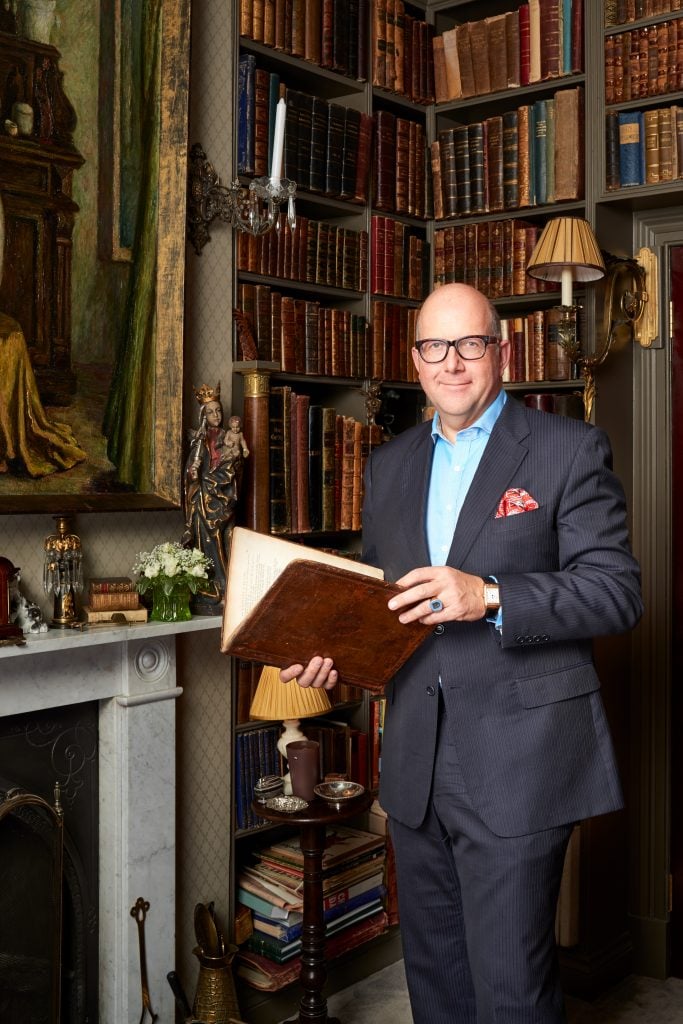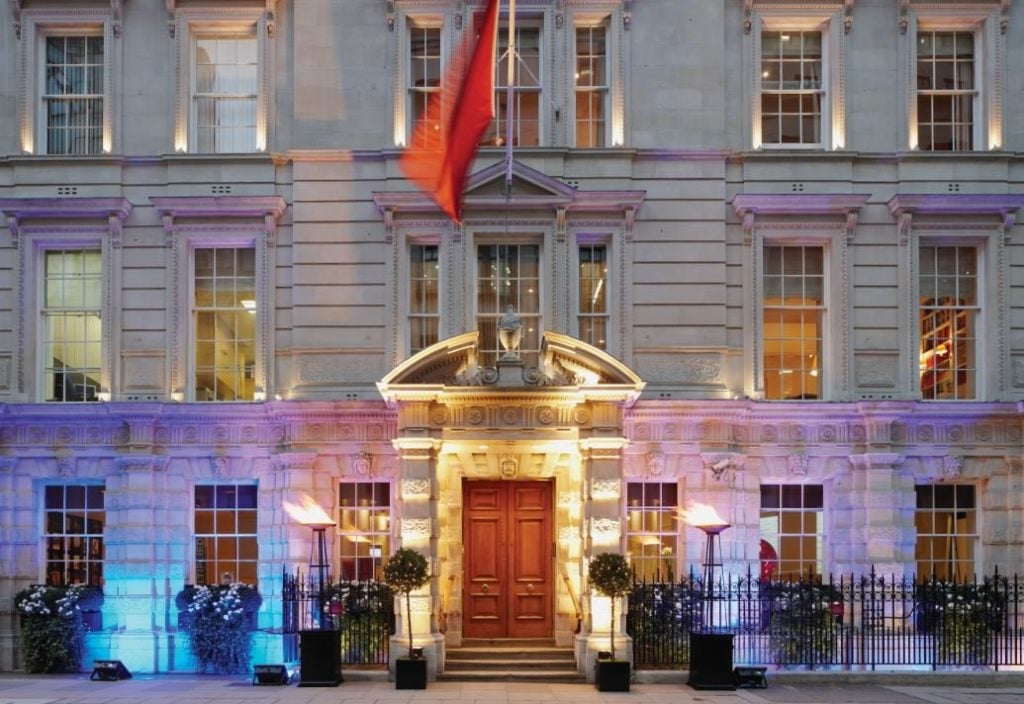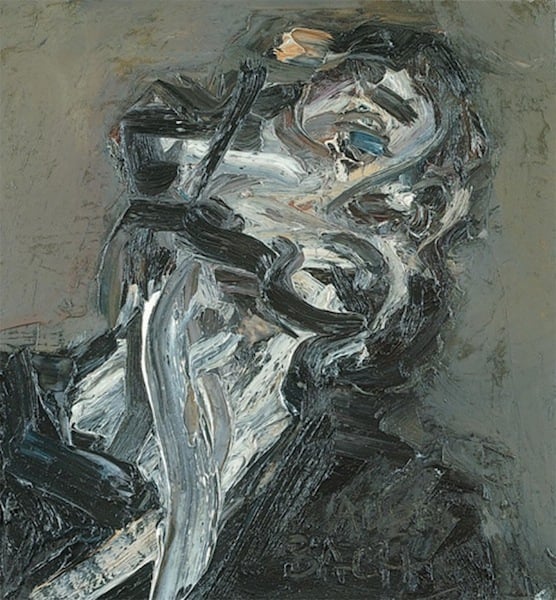‘Our Business Has Got to Be Profitable, Professional, and Fun’: Fine Art Group Founder Philip Hoffman on How Art Investment Has Evolved


Artnet Gallery Network

After a remarkable career as a finance director at Christie’s, Philip Hoffman founded The Fine Art Group in 2001. The London-based art advisory, finance, and investment firm serves clients all over the globe and has become a near-billion-dollar business. Hoffman, for his part, is still regarded for the skills that set him apart at Christie’s—a shrewd business instinct and extreme diligence in demanding heightened transparency in all deals. Ulvi Kasimov, the founder of .ART, recently head to Mayfair to speak with Hoffman about the trajectory of his career and current state of art investing.
How would you define your role in the art world?
Ninety percent of the time my job is guiding our clients, rather than constantly selling to them. This is the opposite of many of my competitors, who focus on selling as fast as possible. If it’s too good to be true we stop a deal happening, whether it’s a purchase at an inflated price, a fake, or a badly timed sale. We value our long-term relationship with our clients and that comes from being honest, not taking advantage of every possible commission.
Do elements of the market deliberately mislead?
I wouldn’t say there’s corruption. I think that’s the wrong word. I might say it’s opaque. And that’s why I don’t deal with a big chunk of the art market. I’ve been working in the art market for 30 years, long enough to see many of the things that go wrong. The sad side of the art market is that it’s not always transparent. People are not straight. They don’t talk honestly about the facts and they gloss over the problems. Dealers are under such high pressure to sell. Without transparency, it can be difficult for collectors to know whether an amazing deal they are being offered is all smoke and mirrors. Pricing in the art market is incredibly difficult. What our client’s value most is the art team’s ability to accurately price an artwork. Even though sometimes, when we are valuing a collection, it’s not what the client wants to hear.
Are you talking about the entire art market including the artists?
I exclude artists. The artists, I think, are pure. They have a lot of fun. If they’re good they get treated like rock stars.
How are you fighting against these “mistruths”?
I say, “We will earn a fair and square living; very transparent and no surprises.” There are very few people in this industry who do that, which is why our clients trust us and stay with us.
We do our own due diligence and provide that to our clients. Most people don’t do anything more than ask, “What price are you asking? What was the most recent auction price? How do we get away with the maximum number above that?” And then come up with some story. My philosophy is to cut out all the bullshit and say, “Is this a great picture? Is it in perfect condition? Have we got all the top restorers in to check it? Have we done all the homework to check the history of this picture?” And that could take five hours; it could take 50 hours. Sometimes it’s taken three months on a major picture worth $50 million.
Have you ever pulled out of a deal after this due diligence?
I took my client out of the deal to purchase a painting for $35 million. Despite my client offering me £500,000 to close the deal, I said there was a five percent chance that the provenance was wrong: it was either worth $35m or $10,000 – because the frame was worth $10,000! If the provenance was right it could have been worth $50 million ten years hence but there was missing history so I advised my client not to buy it.
How did your client react to your advice?
They nearly went mad with me. I nearly lost him as a client. It was a very difficult moment because they said, “We pay you to close deals.” I said, “You do it off your own bat, but I don’t want any money. If you want to buy it, go ahead but I’m out.” Very few people have ever said that to him. Ninety-eight percent of the market would have done that deal, but I refused to do it. So he backed out, and he is still a client today.
What research do you undertake to verify the provenance of a work?
I often use the analogy of an individual buying a house – they wouldn’t go through with it without consulting a surveyor. I argue that when you buy a company for say five, ten or 20 million dollars you bring in your accountants, tax people, lawyers, and forensic guys to check everything out. It normally takes you three months to close the deal.

The facade of Christie’s London auction house. Courtesy of Christie’s.
How did you find yourself in the art world?
I became finance director at Christie’s at 27 years old, with an ACA qualification in accounting and no previous experience in the art market. In fact, the closest I had come was buying Heath Robinson cartoons and antiquarian books as a student. I told the chairman at Christie’s that I couldn’t spell Canaletto, let alone name more than three artists. They said it didn’t matter; they wanted me to bring some proper management into a disparate business. By 29, I was deputy CEO of Christie’s and, by 30, I was on the management board, running half the business worldwide. I left to set up The Fine Art Group in 2001. I still collect antiquarian books and Heath Robinson cartoons, but working in the market has introduced me to new artists.
You say you had no interest in the art world. To what do you attribute your success at Christie’s at such a young age?
I’m an entrepreneur at heart and this was an opportunity to turn Christie’s upside down. I was the only chartered accountant in the group worldwide at that point. I took a cut-throat approach, saying that the business was pretty poorly run; the waste was enormous and the amount of money that could be siphoned out of that business properly was colossal.
In what way was the art market in general inefficient?
Most artists and art-minded people are less concerned with the financial and business aspects of the market; they don’t see how they can control the outflow of money and they get into habits and then money just filters out the back door as fast as it comes in. When I first started at Christie’s far too much was being spent on lavish parties and beautiful catalogues. There wasn’t a link between revenue and cost.
How did your focus on cost-cutting and profitability go down?
Like a lead balloon. You’re talking about another generation. I was 28, and the people I was trying to convince were 50 to 60 years old. They had been at Christie’s or in the art market all their life so it was very difficult. But I joined in 1990 and in 1991 we were heading for a £3m loss. I helped take the business back to £7m in profit so I helped generate a £10m positive shift.
Your current business is based in London’s Mayfair. What does The Fine Art Group do? What is your core philosophy?
We have three core businesses: art advisory, art-secured lending and art investment fund. Within these we are underwriting artworks at auction, advising international art collectors, managing one of the largest collections in the world and loaning against art works as collateral. We get to work with fascinating people and incredible art. Everything we do in our business has got to be profitable, professional and fun. If it’s not all three I don’t do it.
You founded the first private equity art fund in 2004. Your art fund is now worth somewhere between $600 million and $1 billion. How does it work?
Exactly like a private equity fund. We buy, hold, and sell art either long term or short term. Our backers are 140 families in 25 countries. We use the private equity model of drawing money down when you need it and buying art and selling it when there’s an opportunity. And 18 years on, we’re doing bigger and greater, faster and more interesting things every day.
What kind of returns can a typical investor expect from an art investment?
Art funds give people access to deals and expertise. I recommend that people only invest five percent or less of their wealth into art and that you need to buy blue-chip to get a good return. My view is that you can make between 3 to 4 percent per annum up to 13 percent “internal rate of return” which takes into account associated costs involved in an investment.

Frank Auerbach Head of William Feaver (2003). Collection of Gina and Stuart Peterson Courtesy The Tate.
What are your ambitions for your own wealth?
I’m not doing this for the money, I’m doing it as a challenge. I’m not interested in aspiring to the same level of wealth that my clients have. We look after some of the most interesting clients in the world: billionaires, multi-billionaires; they have every luxury you can imagine. It’s great to be invited to join in once in a while but I’m not envious. I don’t want to achieve that type of wealth because it does nothing for me. But building a business is an interesting challenge.
Have you developed any love of art from your early days of ignorance?
Yes, I have! I now have some very interesting paintings – Bridget Riley is in my personal collection for example. I get on extremely well with artistic people. I’m surrounded by the best people in the art world, so it would be nuts not to use their professional help.
Who is your favorite artist currently?
Personally, it’s Frank Auerbach. I love the thickness of the paint applied. I’m amazed. I suppose I’m mathematical so I also like straight lines. If I could buy a Mondrian – it would cost $40 million and I don’t have that money right now. So my dreams I would have an old master or two; a Monet; and I would skip Picasso and have a Mondrian and an Auerbach.
This interview is excerpted from Kasimov’s book The Art of the Possible, a series of interviews that explore the ways Internet technology can remake the art world. Additional interviews from the book will be published here in the coming months.